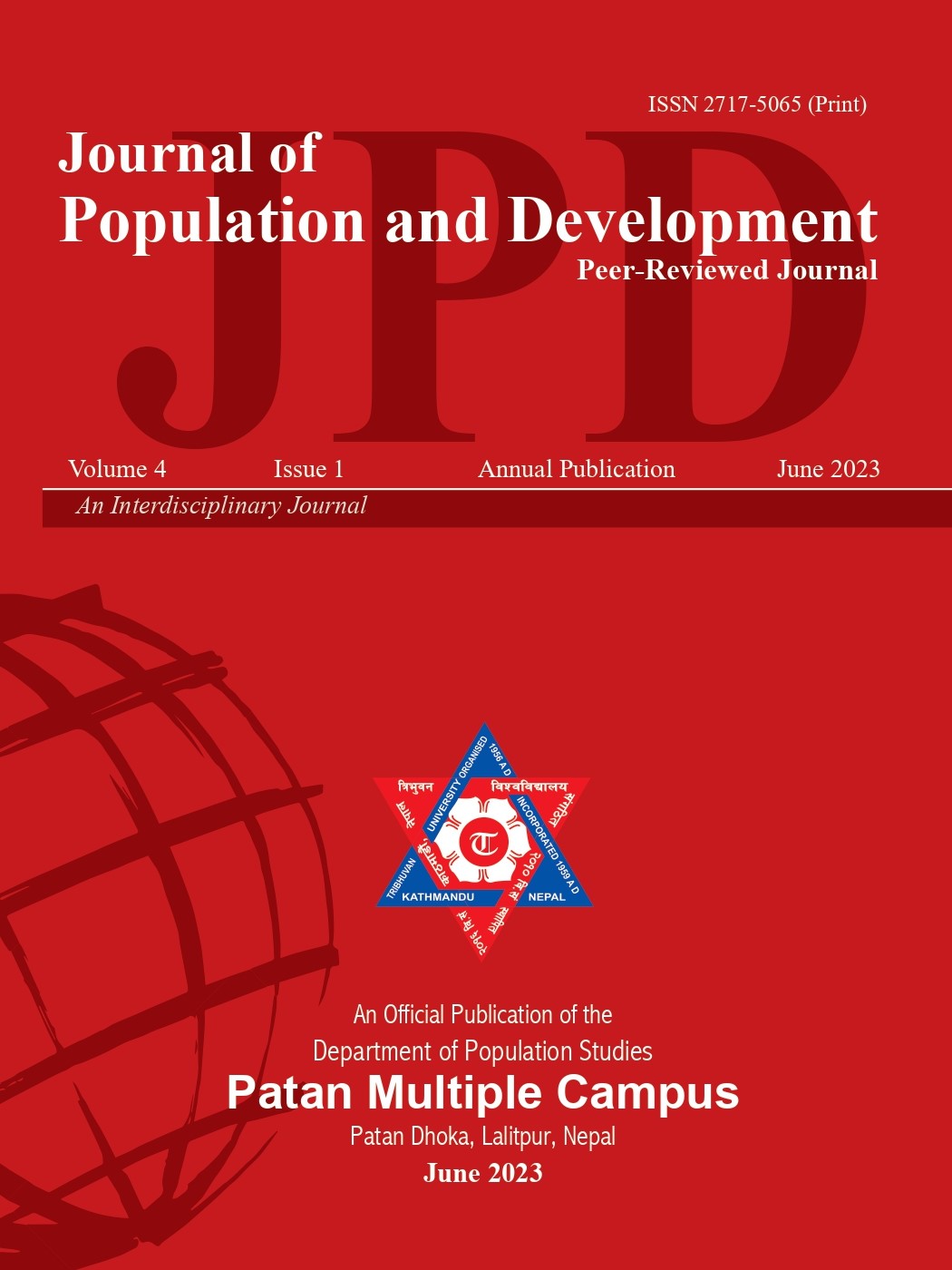Changing Status of Women in Nepal
DOI:
https://doi.org/10.3126/jpd.v4i1.64237Keywords:
Womens’ Status, improvementAbstract
The study attempts to examine the trend in socio-demographic, economic and political situation of Nepalese women, and tries to explain the changes in these areas throughout time. It also tries to review the initiatives taken by the government to improve the lives women in Nepal. The study employs an exploratory and descriptive research design using the published data sheets from National Population Censuses and other National Surveys. The analysis found noticeable changes in all the social, demographic, economic and political areas in favor of women across the years. More than half of total population belongs to female (51%). With the socio-political transformations of the country, the role and status of women have also been dramatically changed in community and household and thinning the barrier to gender inequality. Over the last four decades (1991-2021), they have experienced significantly increased life expectancy (55.5 years - 72.7 years), reduced fertility (5-2.1children), and maternal mortality (575-151/000 live births) and raised the simulate mean age at marriage from 18 to 22 years. They have also significantly improved their educational attainment at all levels. A substantial proportion (52%) of Nepalese women are economically active. Female-headed households and fixed property owners have also been raised to 32 and 24 percent, respectively, which is a significant step toward enhancing women's status and bargaining power in society. After provision of the new Constitution, they experience remarkable progress in the political sphere and at the levels of decision-making. In addition to these achievements, the trend in the values of the GDI, GII, GEM, and HDI also confirms the significant improvements in their socioeconomic and political roles, and the gap in gender inequality between males and females has narrowed over time. These developments and achievements could be the outcome of government initiatives and women's struggles to secure their rights.
Downloads
Downloads
Published
How to Cite
Issue
Section
License
© Department of Population Studies, Patan Multiple Campus

